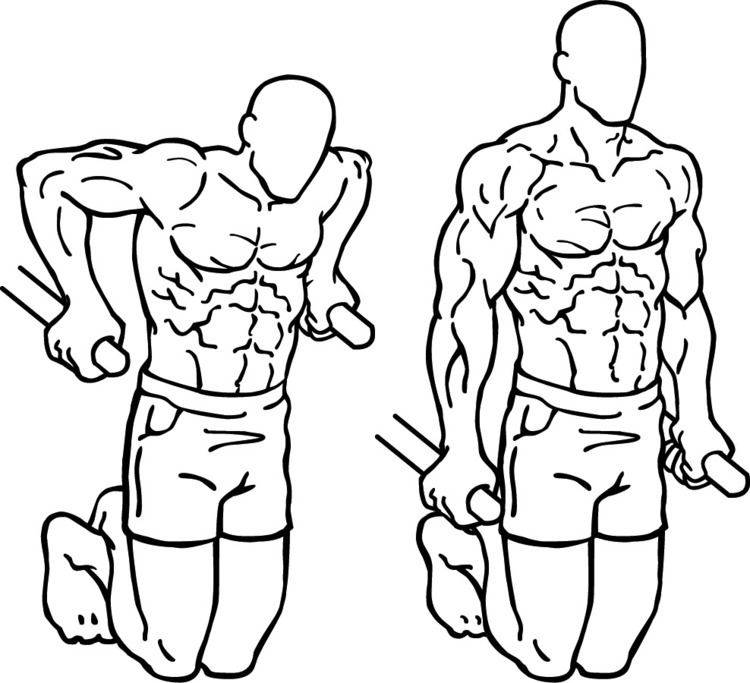 | ||
The dip is an exercise used in strength training. Narrow, shoulder-width dips primarily train the triceps, with major synergists being the anterior deltoid, the pectoralis muscles (sternal, clavicular, and minor), and the rhomboid muscles of the back (in that order). Wide arm training places additional emphasis on the pectoral muscles, similar in respect to the way a wide grip bench press would focus more on the pectorals and less on the triceps.
Contents
Classic meaning
In past decades, the term floor dip was used in place of what is now called a press-up or push-up.
Modern meaning
To perform a dip, the exerciser hangs from a dip bar or from a set of rings with their arms straight down and shoulders over their hands, then lowers their body until their arms are bent to a 90 degree angle at the elbows, and then lifts their body up, returning to the starting position. Short people are able to cope better with a narrower grip, but not with a wider one.
Due to natural flexibility in the shoulder joints, it is important to try to "lock" them as much as possible during this exercise. Otherwise, the supporting rotator cuffs may become strained.
Variation
Usually dips are done on a dip bar, with the exerciser's hands supporting his or her entire body weight. For added resistance, weights can be added by use of a dip belt, weighted vest, or by wearing a backpack with weights in it. A dumbbell may also be held between the knees or ankles. For less resistance, an assisted dip/pull-up machine can be used which reduces the force necessary for the exerciser to elevate his body by use of a counterweight. One may also use resistance bands hooked under his feet to help if he lacks the strength to properly perform a dip.
In the absence of this equipment, a lighter variation of the dip can be performed called the "Bench Dip". The hands are placed on one bench directly underneath the shoulders or on two parallel benches. The legs are straightened and positioned horizontally; the feet rest on another bench in front of the exerciser. This variation trains the upper body muscles in a similar though not exact manner as the normal dip, whilst reducing the total weight lifted by a significant amount. This exercise can be done also off of the edge of a sofa, a kitchen counter, or any surface that supports the lifter.
